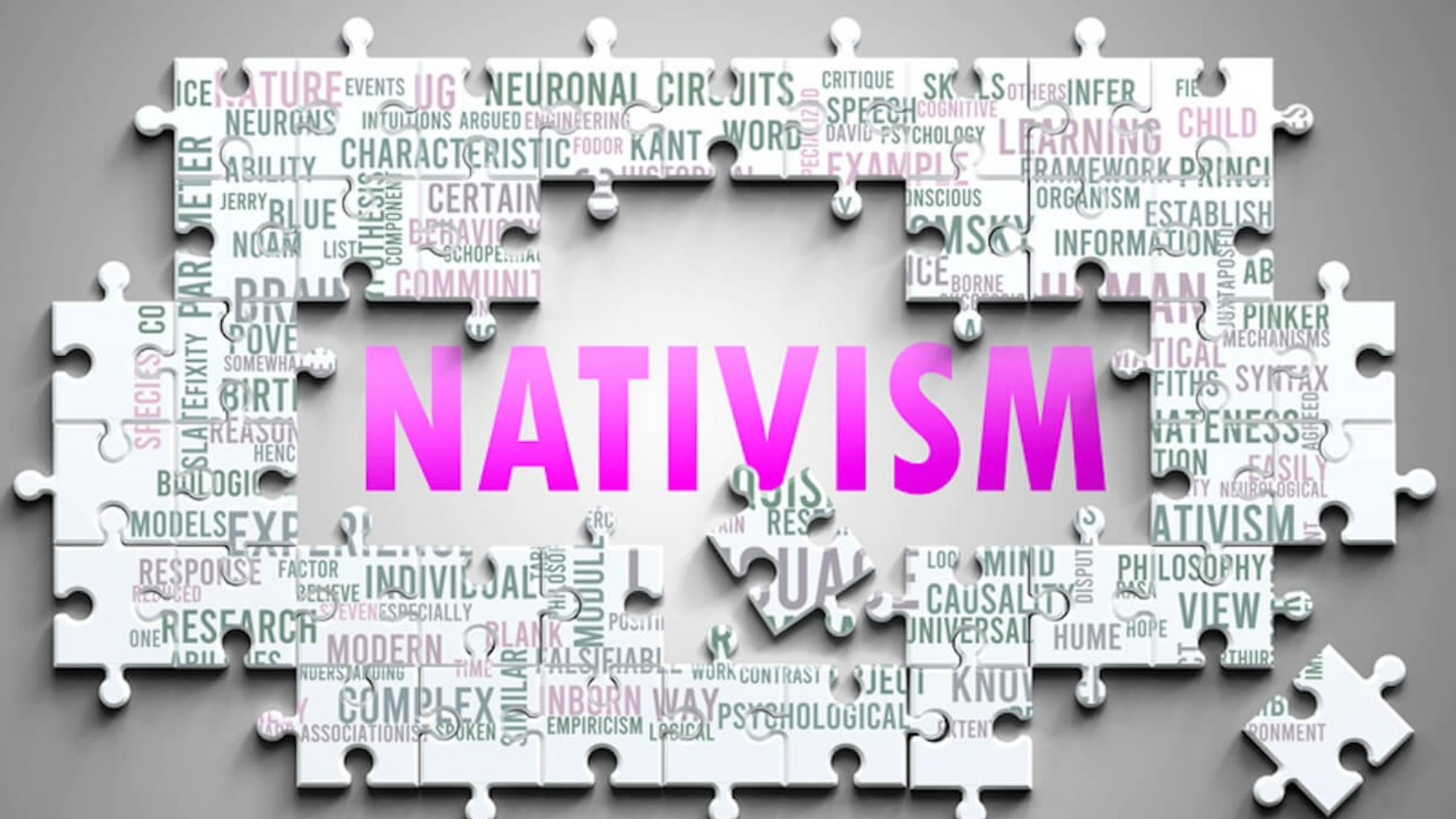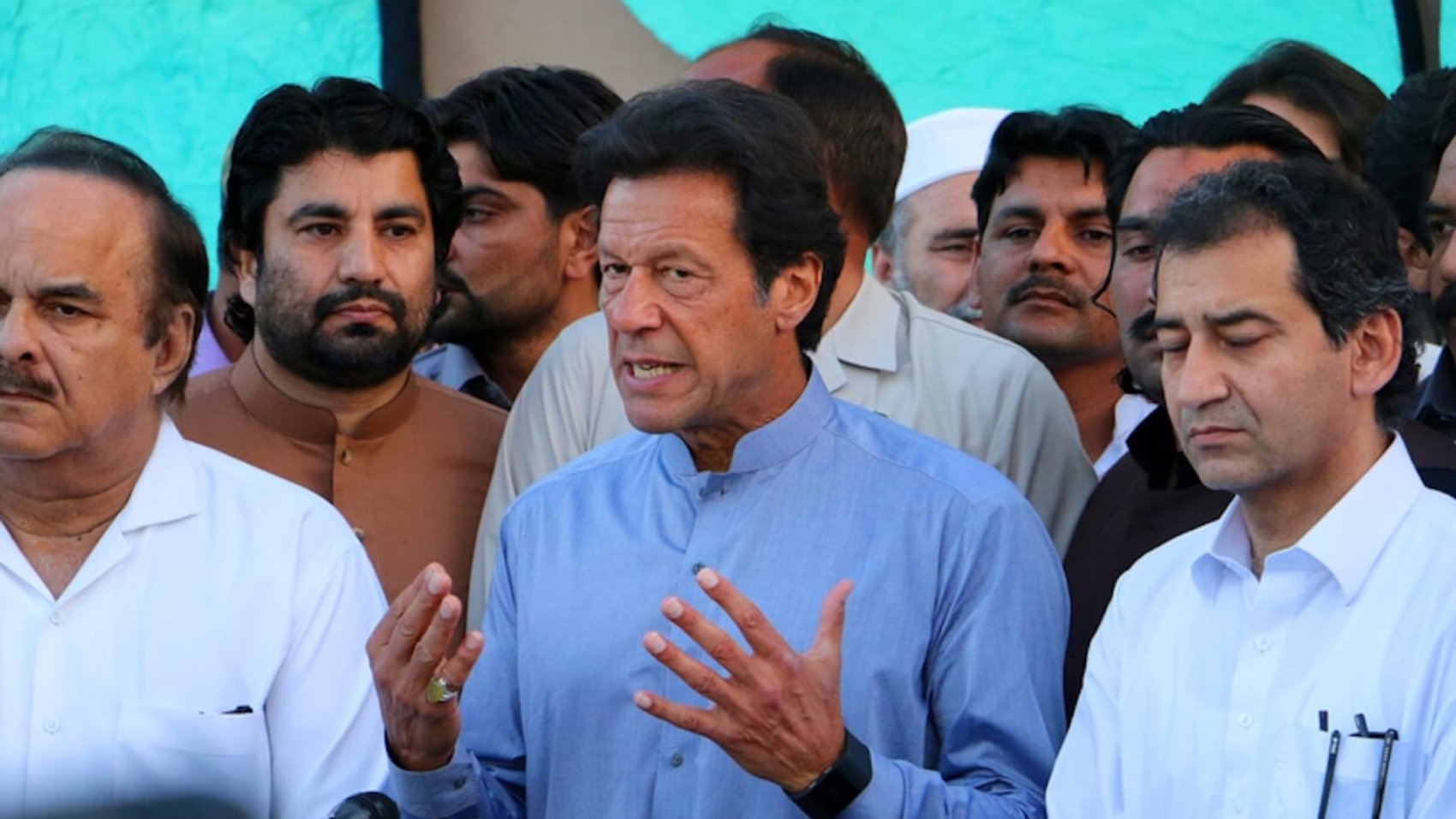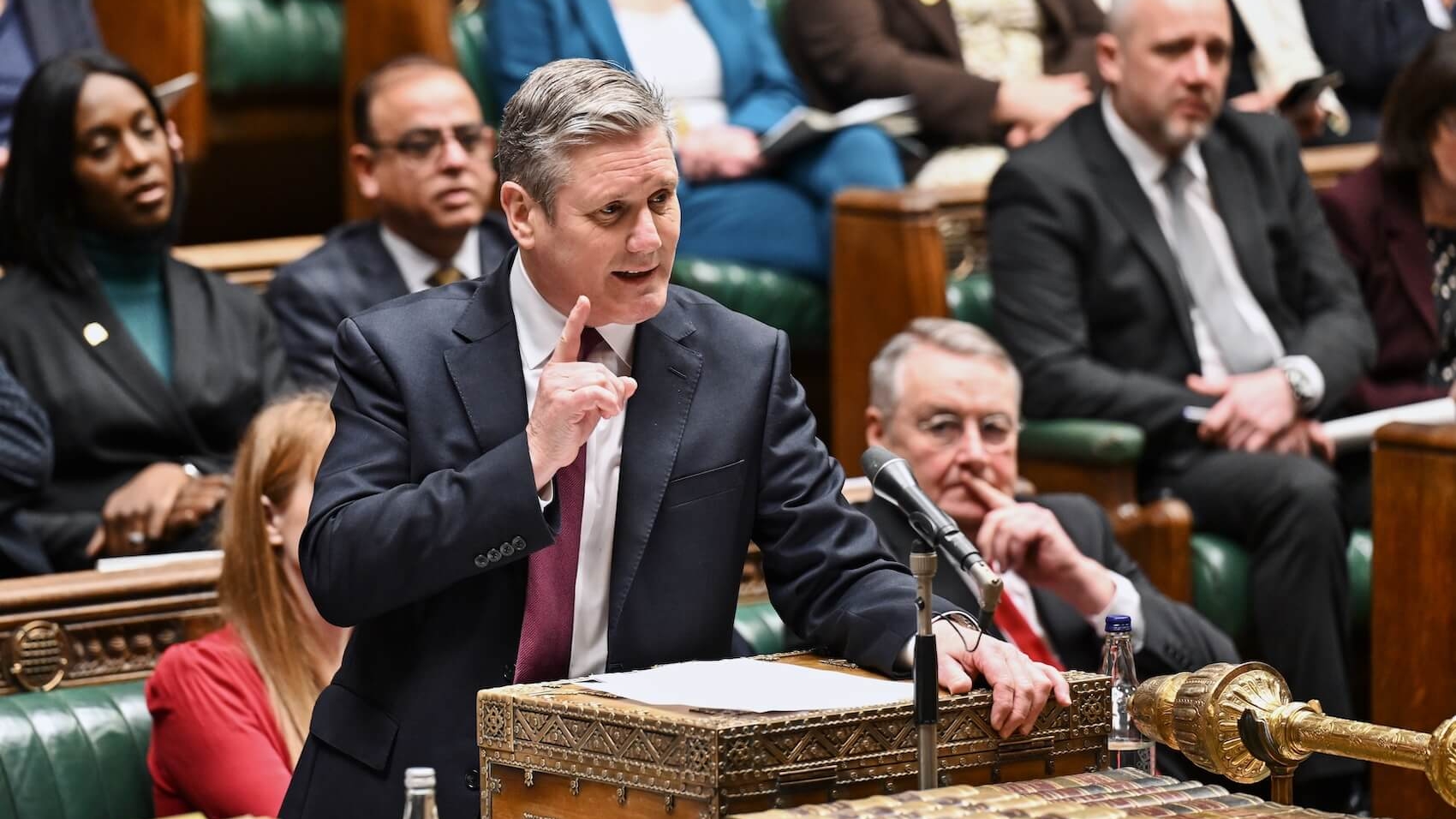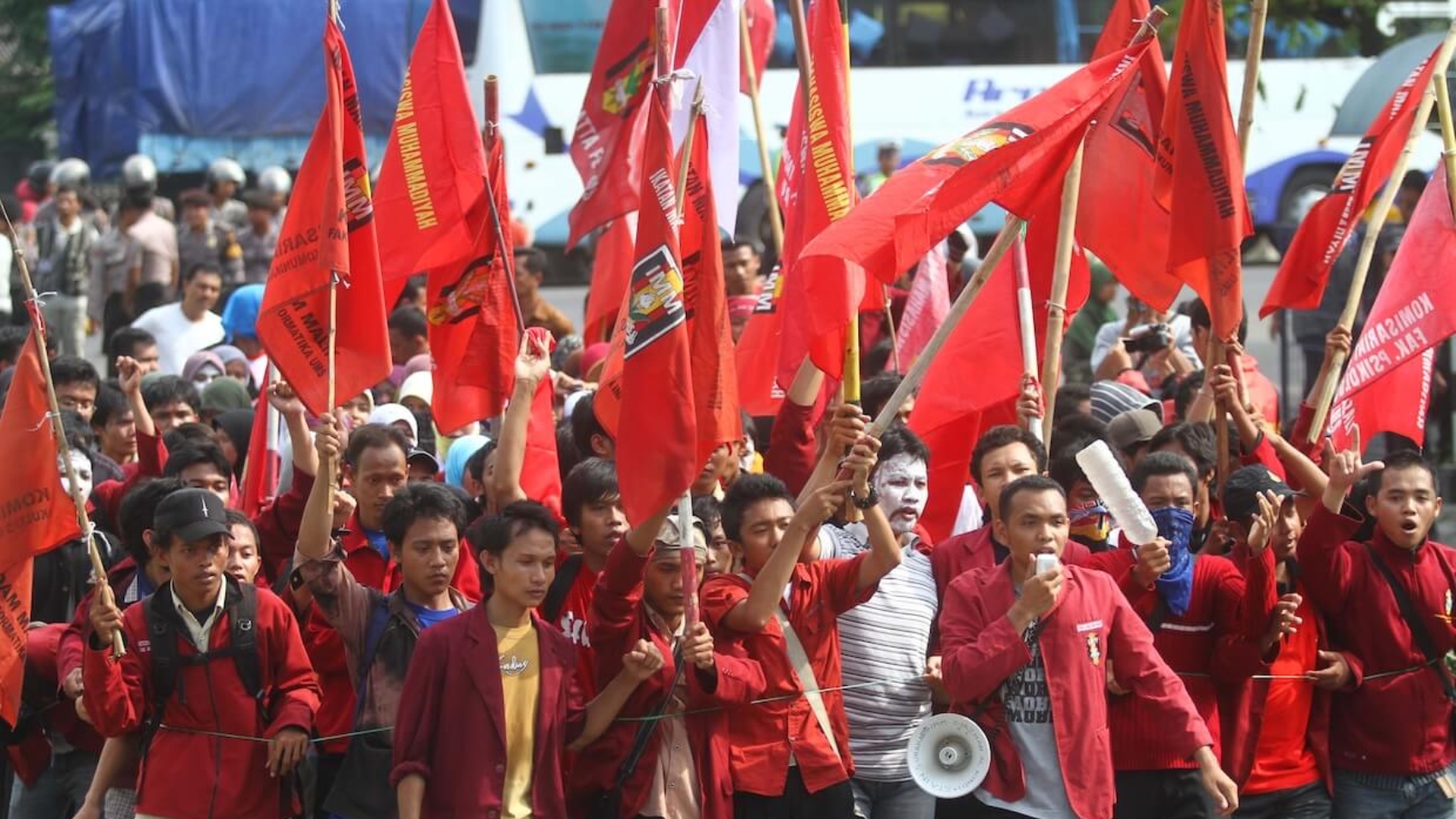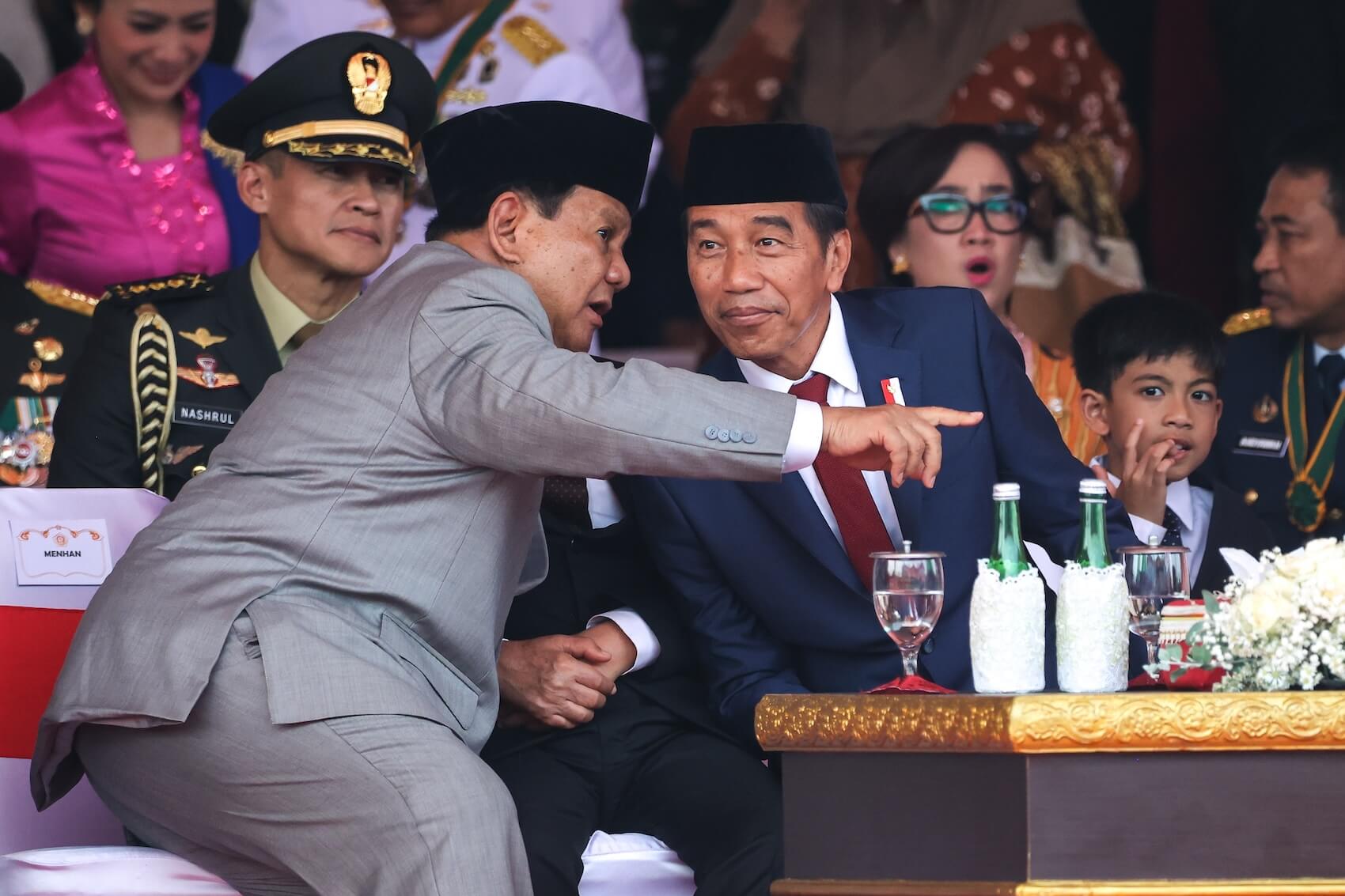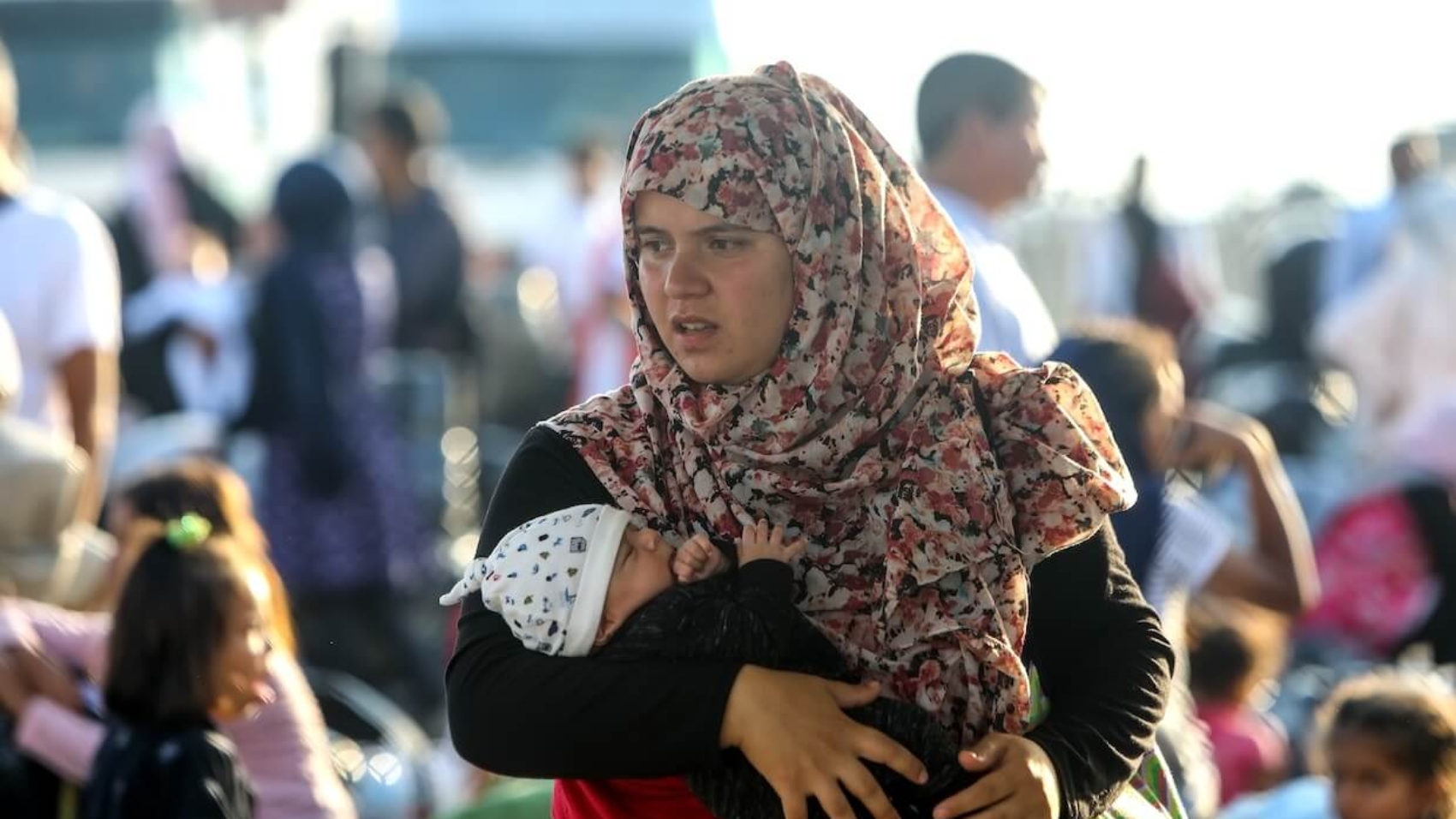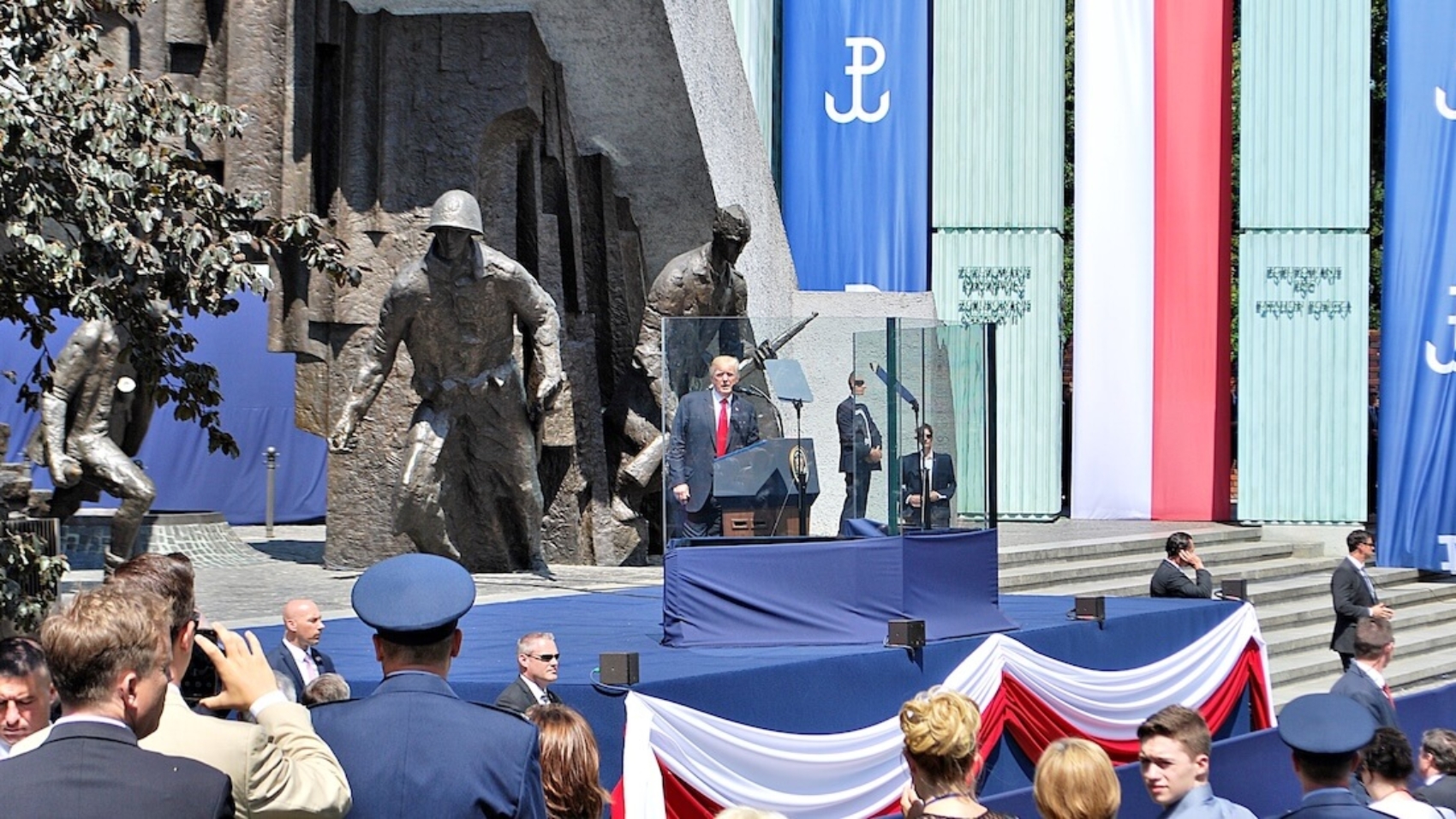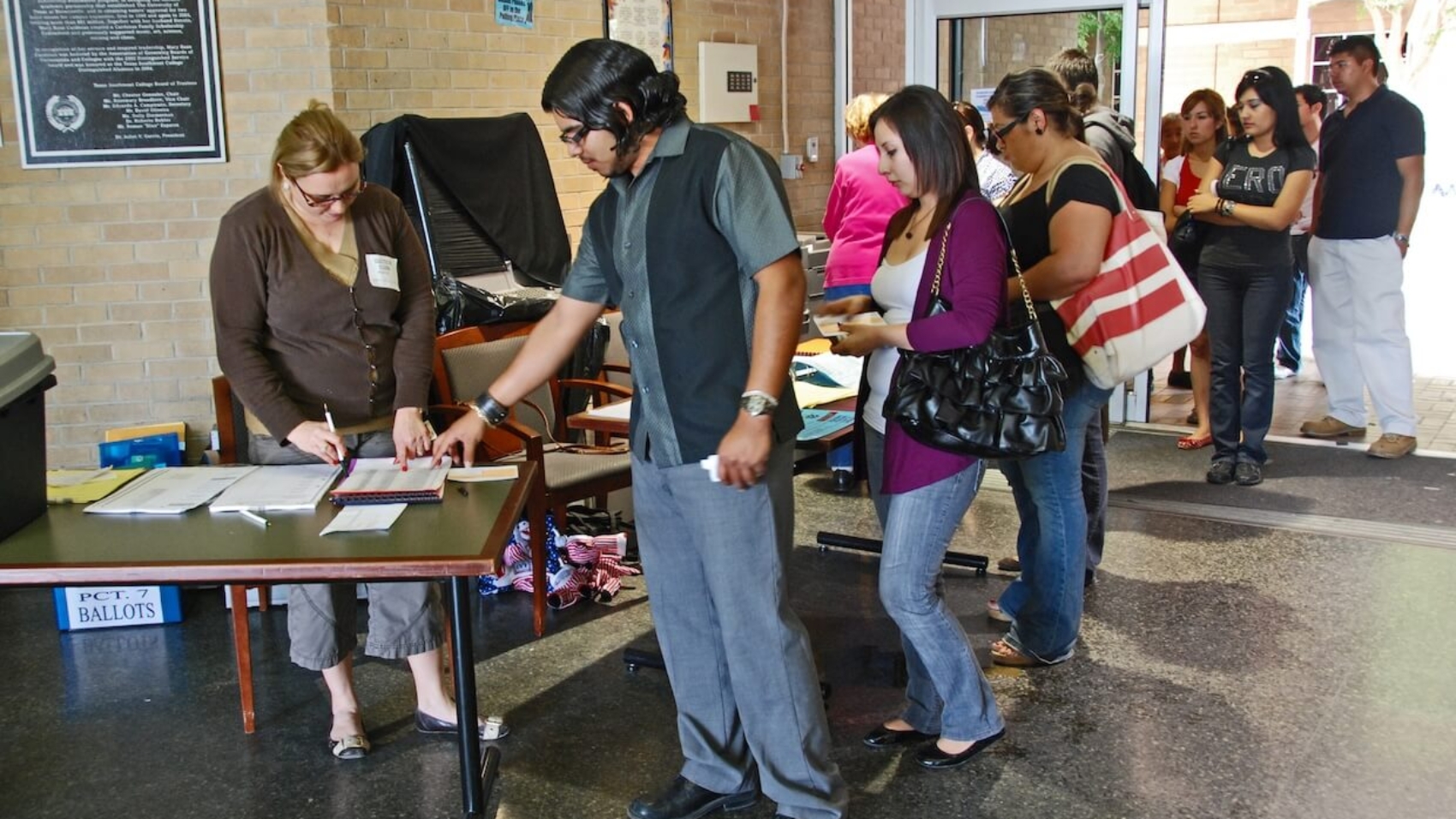When Keir Starmer denounced populism as a “snake oil charm” in July 2024, he became the first British Prime Minister to attack it so explicitly in a major parliamentary speech. Yet inside Labour, the strategy is contested. Should populism be called out as corrosive to democracy, or quietly disarmed by fixing everyday grievances? Starmer prefers direct confrontation; his strategist Morgan McSweeney stresses delivery — “potholes, not populism.” Luke Malhi’s interviews with MPs, aides, and journalists reveal a party caught between naming the threat and co-opting parts of its language to blunt Reform UK’s rise. The debate echoes dilemmas across Europe, underscoring a central question: how can mainstream parties defend institutions without alienating the voters populists claim to represent?
By Luke Malhi
On a warm July morning in 2024, as parliament resumed for the first time following the election, Keir Starmer stood at the dispatch box and denounced populism as a “snake oil charm” that promised easy answers but could deliver only division (Starmer, 2024a). It was the first time a British Prime Minister had attacked populism so explicitly in a set-piece moment of national politics. For some, it sounded like the steady voice of reason after years of turbulence. For others, it risked reinforcing the image of a detached mainstream elite who scold rather than persuade the most dissatisfied in society.
Behind the scenes, Labour figures admit the party is still working out how best to handle the populist threat presented by Reform UK, a populist radical right (PRR) party which secured 14.3% of the vote in 2024, and is now polling at around 34% (Ipsos, 2025). In January of 2025, I conducted interviews with MPs, strategists, and senior journalists, with the promise of anonymity to encourage them to speak candidly. What emerged was a picture of a party that both fears the corrosive potential of populist politics and struggles with how directly to confront it.
Exploring these tensions matters because Britain is hardly alone. Across Europe, mainstream parties face the same dilemma of how they should respond to populists who thrive on frustration with the status quo. Do they call out populism as dangerous, risking charges of elitism? Do they try to quietly address the grievances that fuel it? Or do they attempt to co-opt aspects of the populist policy platform and rhetoric in an attempt to diffuse their appeal? Labour’s struggle with this balance offers a case study in how mainstream parties might navigate this populist age, and what that means for the future of democracy.
Labour’s Response to Populism
When asked how Labour’s inner core thinks about populism, one party strategist sighed: “It’s the problem we can’t ignore, but we can’t talk about it either.” On the surface, Starmer has not been shy about naming populism. In his New Year speech, he condemned “the politics of the easy answer” and accused right-wing populists of offering “grievances, not solutions” (Starmer, 2024c). In the King’s Speech, he branded populism a “snake oil charm” that divided communities (Starmer, 2024a). On a train to the 2025 party conference, he described a battle with the “populist Right Reform” for “the soul of the country” (Starmer, as quoted in BBC, 2025, 03:00). Several MPs told me this reflected his genuine conviction that populism corrodes democracy. One said: “he really does think it’s dangerous. He sees it as a slide toward US-style democratic backsliding.”
Yet many Labour elites worry that naming populism head-on risks alienating voters. As one backbencher put it: “You can’t just tell people they’ve been conned. That sounds like you’re calling them stupid.” A Labour strategist was even more blunt: “That was the Remain mistake. They shouted about how bad Brexit would be and people told them to sod off. If we repeat that with populism, we’ll lose again.”
These doubts are rooted in recent history. The failure of the “Stronger In” campaign during the 2016 referendum still looms large. Its warnings of economic collapse were dismissed by many voters as fearmongering, and that experience has left strategists wary of repeating the mistake of lecturing voters. Several MPs pointed out that even the term “populist”risks alienating audiences, since it is almost always used in a pejoratively charged manner, often shorthand for “irrational” or “ignorant.”
This tension has produced what insiders describe as a split between Starmer and his chief strategist, Morgan McSweeney. Starmer leans toward confrontation, “naming and shaming” populists in the words of one MP, while McSweeney takes the opposite view. According to a Labour aide, “Morgan thinks delivery is the only answer. Fix the potholes, raise living standards, and you’ll take the wind out of Reform’s sails. That’s the fight.”
But delivery is only part of the story. McSweeney’s strategy was said to increasingly involve borrowing selectively from populists where feasible, adopting their language on issues like patriotism or immigration, and co-opting policy themes that resonate with disaffected voters. One journalist explained: “It’s not just about competence. Morgan’s theory is giving people some of the populist framing but strip out the nastiness. Show them you hear their anger but redirect it.”
The difference between the two men is not just tactical but stylistic. Starmer prefers sober warnings about the dangers of populism. McSweeney is more interested in whether voters feel their everyday concerns are being met. As one Labour organiser summarised: “Keir wants to talk about democracy. Morgan wants to talk about potholes. And that’s the real debate inside Number 10.”
Journalists I spoke to consistently described Starmer’s style as technocratic. Some called him “prosecutorial,” others “old-fashioned” or “statesmanlike.” Even sympathetic insiders conceded that he can come across as an “enforcer of the status quo.” Several argued that this style is both personal and political: it reflects Starmer’s legal training, but also Labour’s deliberate attempt to ‘detoxify’ after Jeremy Corbyn. One campaign aide said: “We knew we couldn’t win if we looked like we were promising the moon again. Voters didn’t want grand visions. They wanted someone boring enough to fix the basics.”
That instinct shaped the 2024 campaign. Unlike Boris Johnson, who thrived on flamboyant gestures, or Corbyn, who rallied crowds with populist appeals to the “many not the few,” Starmer positioned himself as the steady alternative. His rhetoric avoided spectacle. His speeches focused on detail, compromise, and delivery. A senior journalist put it this way: “The whole pitch was: ‘We’ll be dull but competent.’ After fifteen years of drama, dull sounded good.”
At times, this meant deliberately lowering expectations. Multiple insiders recalled that Starmer instructed the party to avoid language that might create impossible promises. One MP said: “He didn’t want a repeat of 2017 or 2019, when we wrote cheques we couldn’t cash. He genuinely fears that broken promises feed populism.”
Starmer’s Worldview and the Parliamentary Party
Starmer’s instinct to treat populism as a moral threat is rooted in his background. As a barrister and former Director of Public Prosecutions, he was steeped in the idea that rules and institutions hold society together. Starmer’s choice to appoint Richard Hermer as attorney general in July 2024 was a clear example of this, and something which required ‘considerable effort’ according to one political journalist (Rodgers, 2025). Soon after his appointment, Hermer (2024) gave a speech which made clear his concern about populism and his plans to counter it:
‘We are increasingly confronted by the divisive and disruptive force of populism… We face leaders who appeal to the ‘will of the people’ – as exclusively interpreted by them – as the only truly legitimate source of constitutional authority. Their rhetoric conjures images of a conspiracy of ‘elites’ – an enemy that is hard to define but invariably including the people and independent institutions who exercise the kind of checks and balances on executive power that are the essence of liberal democracy and the rule of law… I hope you take some comfort in the fact that the importance of the rule of law and the constitutional balance is embedded in my DNA and that of a Prime Minister who not only rose to the top ranks of the Bar but served his country as DPP.’
Political journalist Ian Dunt correctly observed that it is rare for British politicians, especially attorney generals, to demonstrate “the kind of political and philosophical depth shown in that speech.” Given their shared history, Dunt (2025) claimed Starmer “had clearly authorised him to do the work they both believed in [to counter populism], in a much more robust and outspoken way.”
Labour’s MPs generally echoed Starmer and Hermer’s worldview. In interviews, many brought up Cas Mudde’s (2017) definition of populism unprompted, describing it as a worldview that pits a virtuous “people” against a corrupt “elite.”They consistently rejected this framing as corrosive to democracy. One MP told me: “The idea that politics is just a battle between good, ordinary people and a corrupt elite goes against how democracy really works – I think we’ve tried to push against that.” Indeed, Labour interviewees’ comments echoed many of the inherent dangers of populism for democracy identified by political scientist Jan Werner Muller (2016). They stressed that compromise and pluralism are essential, that it is impossible to distil the will of the people into a single viewpoint, and that institutions such as the judiciary and Parliament are safeguards, not obstacles. One insider remarked: “Respect for institutions is what sets us apart from the populists. I think for everyone here, that is absolutely key.”
This worldview shaped Labour’s stance on contentious issues. When the Conservatives tried to override the Supreme Court on the Rwanda deportation scheme, Yvette Cooper (2024) chastised a party that wanted to “stop all courts.” When Boris Johnson was accused of breaking lockdown rules during Partygate, Angela Rayner (2024) argued that the Prime Minister had “degraded” Britain’s institutions. When Conservative MPs criticised the International Criminal Court (ICC) for issuing an arrest warrant for Benjamin Neteyahu, David Lammy (2025) passionately argued that the UK’s duty was to uphold international law, no matter what.
For MPs, these moments weren’t simply opportunistic attack lines. Rather, they reflect an institutionalist ethos that sets Labour apart from its populist rivals. Several interviewees contrasted this with both right-wing populism and left-wing ‘Corbynism,’ which, at times, they claimed, flirted with a Manichean and binary view of “the people versus the elite”described by the ideational definition of populism (Mudde, 2017). As one journalist observed: “Starmer doesn’t do binaries. He does compromise. That’s his politics.” This rejection of populism runs deep within the identity of the Parliamentary Labour Party. MPs and advisers alike saw their role as defending the structures and norms of democracy against the polarising logic of populism.
A Compromise Strategy
Despite these convictions, Labour’s public-facing stance has been more muted. The compromise between Starmer and McSweeney means explicit attacks on populism are largely confined to Starmer’s speeches, whilst the wider party message stresses competence and delivery. At the same time, McSweeney’s strategy has steered Labour toward selective co-option of populist themes, borrowing rhetoric on sovereignty, fairness, and security when it helps shore up support against the PRR Reform UK.
MPs are divided over this balancing act. Some welcomed Starmer’s willingness to call out populism explicitly, saying it reassured the new intake that the party was willing to “name the problem.” Others warned that in Leave-voting constituencies such rhetoric could backfire.
A similar divergence in opinion appeared when MPs were asked about McSweeney’s push for Labour to co-opt populist policies and rhetoric in certain areas. Some Labour elites felt that, although it was uncomfortable, it was necessary to reduce the electoral appeal of Reform UK. However, others felt it risked legitimising right-wing populists and alienating their voter base on the left.
Indeed, recent research highlights that mainstream parties risk alienating their core voter bases when co-opting populist policies or rhetoric. A 2024 study on mainstream partisans’ responses to populist radical right parties found that even tactical forms of cooperation can provoke feelings of betrayal among core supporters, while outright exclusion may conversely reassure them that democratic boundaries are being defended (van der Brug et al., 2024). In other words, accepting far-right actors as legitimate competitors may backfire by alienating loyal voters, reinforcing the dilemma that ignoring populism allows it to grow, but engaging with it risks damaging mainstream parties’ own legitimacy.
The result is a fractured Labour elite, and a party that highlights it is not populist, but is simultaneously cautious about declaring itself against populism. As one senior journalist told me: “They’ll quietly fix things, and when it helps, they’ll borrow the populist language.”
The European Dilemma
Labour’s balancing act is part of a wider European story. Both the Social Democratic Party (SPÖ) and the Austrian People’s Party (ÖVP) frequently denounce the Freedom Party (FPÖ) as a right-wing populist force that threatens democratic stability. They highlight the FPÖ’s history of extremism and corruption scandals to argue it is unfit to govern. However, some analysts suggest that this moralising tone has also reinforced the FPÖ’s image as an outsider persecuted by the political establishment (Greilinger, 2024).
In France, Emmanuel Macron has pitched himself as the rational bulwark against Marine Le Pen. His rhetoric helped him win two presidential elections, yet his reputation as the anti-populist “president of the elite” has also fuelled the resentment that benefits her party (Alduy, 2024).
And in Slovakia, opposition leaders stress the importance of defending institutions against Robert Fico, though appeals to democratic norms often fail to resonate with voters who are more concerned about wages or security (OSW Centre for Eastern Studies, 2025).
Labour’s interviews echo these patterns. Starmer’s decision to call populism a “snake oil” resembles Macron’s confrontational stance, while McSweeney’s “pothole theory” mirrors the German CDU’s instinct to quietly address material grievances. And his tactic of co-opting populist themes recalls centre-left parties across Europe that have edged rightward on migration or nationalism in hopes of undercutting their rivals. Both approaches highlight the same paradox: ignoring populism lets it grow but confronting it risks alienating dissatisfied voters drawn to populist ‘common sense’solutions.
Conclusion: Lessons for Democracy
Labour’s struggle over how to deal with populism reflects a central dilemma facing European democracies. Mainstream parties increasingly recognise that populism threatens democratic norms, yet they are torn between exposing it and addressing the grievances that fuel it.
My interviews reveal a party uneasy about this balance. Starmer is inclined to call out populism for what it is. McSweeney and other strategists argue that delivery, not denunciation, is what keeps populists at bay – along with carefully borrowing some of their language and themes. MPs, often caught in between, worry about how rhetoric plays in their constituencies.
Since my research in January 2025, Starmer appears to have shifted closer to McSweeney’s view. He has grown more willing to co-opt populist policy positions and language in the hope of winning back voters tempted by Reform UK. A YouGov poll in early 2025 showed Reform UK as likely to be the largest party in parliament if a snap election were called, underscoring how desperate party elites have become. But comparative research suggests that Labour’s gamble may backfire. Political scientist Tarik Abou-Chadi has shown that when mainstream parties adopt aspects of populist policies from the far-right, they rarely succeed in winning over these voters. Instead, they might risk normalising the very politics they sought to resist.
Labour’s experience illustrates the challenge facing mainstream parties: how to safeguard democratic principles while competing in a political landscape reshaped by populism. These are not uniquely British problems, but global ones. For young people inheriting these democracies, the question is urgent: how can political actors who genuinely care about democracy confront populism without alienating voters or belittling their grievances?
References
Alduy, C. (2024, July 4). “How France Fell to the Far Right: In the End, Le Pen Hardly Had to Moderate to Gain Power.” Foreign Affairs. https://www.foreignaffairs.com/france/how-france-fell-far-right-le-pen-macron
BBC. (2025, September 28). “Sunday with Laura Kuenssberg: Interview with the Prime Minister [TV broadcast].” BBC iPlayer. https://www.bbc.co.uk/iplayer/episode/m002k6hc/sunday-with-laura-kuenssberg-interview-with-the-prime-minister
Cooper, Y. (2024, June 20). “Speech on Supreme Court ruling and Rwanda deportation.” Hansard. https://hansard.parliament.uk
Dunt, I. (2025, February 5). “A good man in government.” Politics.co.uk. https://iandunt.substack.com/p/a-good-man-in-government
Greilinger, G. (2024, January 2). “Normalising the far right: a warning from Austria.” Social Europe.
Hermer, R. (2024, July 25). “Speech as Attorney General on populism and the rule of law.” UK Government. https://www.gov.uk/government/speeches/attorney-general-richard-hermer-on-populism
Ipsos. (2025, January). “Voting intention poll, January 2025.” Ipsos. https://www.ipsos.com/en-uk/polling-voting-intention-2025
Lammy, D. (2025, March 10). “Statement on the International Criminal Court.” Hansard. https://hansard.parliament.uk
March, L. (2018). “Left and right populism compared: The British case.” The British Journal of Politics and International Relations, 20(2), 281–298. https://doi.org/10.1177/1369148118763892
Müller, J.-W. (2016). What is populism? University of Pennsylvania Press.
Mudde, C. (2017). Populism: A very short introduction. Oxford University Press. https://doi.org/10.1093/actrade/9780190234874.001.0001
OSW Centre for Eastern Studies. (2025, January 28). “Slovakia: Fico’s government in trouble.” https://www.osw.waw.pl/en/publikacje/analyses/2025-01-28/slovakia-ficos-government-trouble
Rayner, A. (2024, April 21). “Referral of Prime Minister to Committee of Privileges.” Hansard. https://hansard.parliament.uk
Rodgers, S. (2025, February 24). “For evidence of Labour doubt in the Starmer project, look no further than his attorney general.” The Guardian. https://www.theguardian.com/commentisfree/2025/feb/24/labour-keir-starmer-project-attorney-general-richard-hermer
Russo, Luana & Brock, Paula Schulze. (2025). “Mainstream partisans’ affective
response to (non) cooperation with populist radical right parties.” West European Politics, 48:6, 1389-1427, DOI: 10.1080/01402382.2024.2336436
Starmer, K. (2024a, July 17). “Debate on the address.” Hansard. https://hansard.parliament.uk
Starmer, K. (2024b, October 14). “PM International Investment Summit speech.” UK Government. https://www.gov.uk/government/speeches/pm-international-investment-summit-speech-14-october-2024
Starmer, K. (2024c, January 2). “Keir Starmer’s New Year speech.” Labour Party. https://labour.org.uk/updates/press-releases/keir-starmers-new-year-speech

